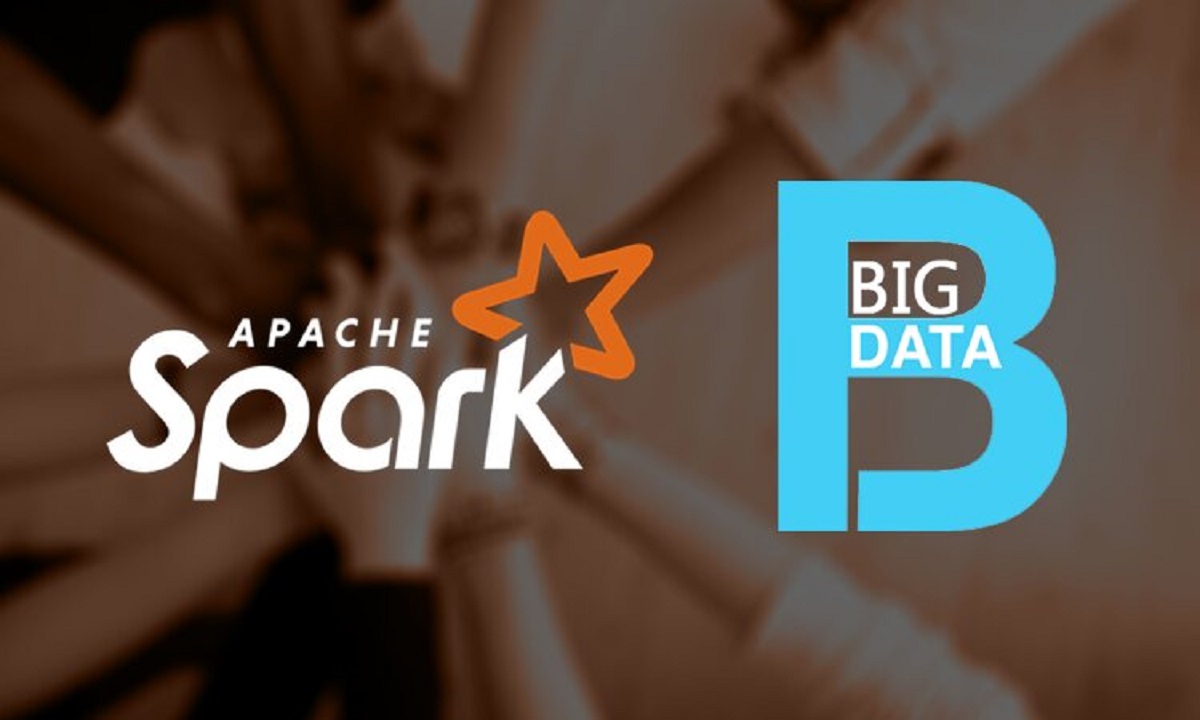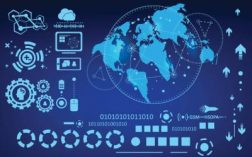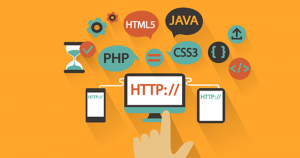Introduction
Welcome to the world of Big Data, where massive amounts of information are generated every second. Effectively managing and analyzing this data is crucial for businesses, researchers, and organizations to gain valuable insights and make informed decisions. One of the key tools in this domain is R programming.
R programming has gained tremendous popularity in recent years due to its versatility and power in handling complex data sets. It is an open-source programming language and environment specifically designed for statistical computing and graphics. R programming provides an extensive range of libraries and packages that enable data manipulation, analysis, visualization, and modeling.
In this article, we will explore the role of R programming in the world of Big Data. We will discuss its advantages, applications, and the challenges it presents. Whether you are a data scientist, a business analyst, or someone interested in the field of Big Data, understanding R programming and its place in this domain is essential.
So, let’s dive into the fascinating world of R programming and Big Data!
What is R Programming?
R programming is a powerful programming language and environment that is widely used for statistical computing and graphics. It was developed by Ross Ihaka and Robert Gentleman in the 1990s and has since become one of the most popular tools for data analysis and visualization.
One of the key features of R programming is its extensive library of packages, which provide a wide range of functions and methods for data manipulation, statistical modeling, and visualization. These packages, along with R’s flexible syntax, allow users to easily explore and analyze complex datasets.
R programming is known for its ease of use and its ability to handle large datasets efficiently. It has a user-friendly interface and provides a high-level language that makes it accessible to both experienced programmers and beginners.
One of the reasons for R programming’s popularity is its compatibility with other programming languages and tools. It can be easily integrated with languages like Python and SQL, as well as with popular data processing frameworks like Hadoop and Spark.
Furthermore, R programming is an open-source language, which means that it is freely available for anyone to use and modify. This open nature has led to a vibrant community of R users who create and share packages, code snippets, and tutorials, making it easier for newcomers to learn and benefit from the language.
In summary, R programming is a versatile and powerful language that is widely used for data analysis and visualization. Its extensive library of packages, ease of use, and compatibility with other tools and languages make it a valuable asset in the field of data science and Big Data.
R Programming in Big Data
Big Data refers to the massive volume, variety, and velocity of data that is generated every day. Traditional data analysis tools often struggle to handle the scale and complexity of Big Data. This is where R programming shines, as it provides powerful capabilities to process, analyze, and visualize large datasets.
R programming is well-suited for Big Data analytics due to its ability to handle complex data structures and perform parallel processing. It offers various packages, such as ‘dplyr’ and ‘data.table’, that enable efficient data preprocessing and manipulation. These packages can handle large datasets by leveraging techniques like data chunking, parallel processing, and in-memory computing.
Moreover, R programming integrates seamlessly with other Big Data technologies, such as Hadoop and Spark. It can easily connect to distributed file systems and database engines, enabling users to access and process data stored across multiple nodes. R packages like ‘rhadoop’, ‘sparklyr’, and ‘H2O.ai’ provide interfaces to work with these technologies within the R environment.
R programming also excels in statistical modeling and machine learning, which are crucial components of Big Data analytics. The ‘caret’ and ‘mlr’ packages offer a wide range of algorithms for predictive modeling, classification, clustering, and more. Users can train and test models on large datasets using parallel processing techniques, thereby accelerating the model building process.
Visualization plays a vital role in understanding and communicating insights from Big Data. R programming provides powerful visualization libraries like ‘ggplot2’ and ‘plotly’ that can handle large datasets and create visually appealing plots and charts. These visualizations aid in uncovering patterns, trends, and anomalies in the data.
With its extensive capabilities in data processing, statistical modeling, and visualization, R programming is a valuable tool in the world of Big Data. It empowers data scientists, analysts, and researchers to extract meaningful insights and make data-driven decisions from the vast amounts of information available.
Advantages of R Programming in Big Data
R programming offers several advantages when it comes to handling Big Data. Here are some key advantages:
1. Versatility: R programming is a versatile language with a wide variety of packages and libraries. It supports various statistical and machine learning techniques, making it suitable for a wide range of data analysis tasks. Whether it’s data preprocessing, exploratory data analysis, predictive modeling, or visualization, R programming has the tools and packages to handle it.
2. Scalability: R programming has the ability to handle large datasets and perform parallel processing. With the help of packages like ‘dplyr’ and ‘data.table’, users can efficiently manipulate and process big data. R programming is also compatible with distributed computing frameworks like Hadoop and Spark, enabling users to leverage the power of distributed processing for handling massive datasets.
3. Open-source and Active Community: R programming is an open-source language, which means it is freely available to anyone. This has led to a large and active community of R users who contribute to the development of new packages, share their knowledge through forums and tutorials, and provide support. The open-source nature ensures continuous improvement and keeps R programming up-to-date with the latest advancements in the field of Big Data.
4. Extensive Package Ecosystem: R programming has a vast ecosystem of packages and libraries that cover a wide range of data analysis and visualization tasks. These packages offer ready-to-use functions and methods, saving time and effort in coding from scratch. Additionally, the packages are regularly updated and enhanced by the community, ensuring access to cutting-edge techniques and algorithms.
5. Integration with Other Tools and Languages: R programming integrates seamlessly with other programming languages like Python, C++, and Java, as well as SQL databases. This allows users to combine the strengths of different tools and make use of existing code and infrastructure. R programming can also connect to popular data processing frameworks like Hadoop and Spark, enabling users to work with distributed data seamlessly.
In summary, R programming offers versatility, scalability, an active community, an extensive package ecosystem, and seamless integration with other tools. These advantages make it a powerful and efficient choice for handling Big Data and performing complex data analysis tasks.
Applications of R Programming in Big Data
R programming has found numerous applications in the field of Big Data analytics. Here are some key areas where R programming is commonly used:
1. Data Exploration and Visualization: R programming offers a wide range of packages, such as ‘ggplot2’ and ‘plotly’, for data visualization. These packages enable users to create visually appealing and informative plots, charts, and graphs, allowing for effective data exploration and communication of insights from Big Data. Visualizations help in identifying patterns, trends, and outliers, which are crucial in the analysis of large datasets.
2. Predictive Analytics: R programming is widely used for predictive modeling and machine learning tasks in Big Data analytics. The ‘caret’ and ‘mlr’ packages provide a vast array of algorithms for classification, regression, clustering, and more. These algorithms can be applied to large datasets, and the performance can be further enhanced through parallel processing techniques. R programming enables users to build accurate predictive models that can handle vast amounts of data.
3. Text Mining and Natural Language Processing: With the explosion of text data in the digital age, R programming is extensively used for text mining and natural language processing (NLP) tasks. Packages like ‘tm’ and ‘textmineR’ provide functionalities to preprocess, analyze, and derive insights from unstructured text data. R programming enables users to extract information, perform sentiment analysis, and build text classification or topic modeling models on large-scale text datasets.
4. Social Media Analytics: R programming is a popular choice for analyzing social media data due to its ability to handle large datasets and its extensive library of packages for data processing and visualization. Social media analytics using R programming involves extracting relevant data from social media platforms, performing sentiment analysis, identifying trends, and understanding user behavior. R programming enables businesses to gain valuable insights from social media data to inform marketing strategies, customer insights, and brand management.
5. Financial Analytics: R programming is widely adopted in the financial industry for various Big Data analytics tasks. It is used for risk modeling, portfolio optimization, fraud detection, and credit scoring. R programming, along with packages like ‘quantmod’ and ‘PerformanceAnalytics’, allows financial professionals to analyze and interpret vast amounts of financial data and make data-driven decisions. Its statistical modeling and data visualization capabilities facilitate advanced financial analysis and risk management.
In summary, R programming finds applications in data exploration and visualization, predictive analytics, text mining and NLP, social media analytics, and financial analytics within the field of Big Data. The flexibility, scalability, and extensive package ecosystem of R programming make it a powerful tool for addressing complex data analysis challenges in various industries.
Challenges of using R Programming in Big Data
While R programming offers many advantages in handling Big Data, it also comes with a few challenges that users may encounter. Here are some key challenges:
1. Memory Management: R programming is known for its in-memory processing, which means that all data need to fit into the available RAM. For large datasets, this can be a limitation as it may lead to memory constraints and slow down the analysis. Users need to carefully manage memory usage by optimizing code, using efficient data structures, and leveraging techniques like data chunking.
2. Processing Speed: When dealing with Big Data, processing speed becomes a crucial factor. R programming can encounter performance issues when handling large datasets, primarily due to its interpreted nature. Compared to compiled languages like C++ or Java, R programming may be slower in certain computations. Users can mitigate this challenge by using efficient algorithms, parallel processing techniques, and leveraging distributed computing frameworks like Hadoop or Spark.
3. Lack of Scalability: While R programming has made strides in handling large datasets, it may not scale as well as some other languages or tools designed specifically for Big Data processing. R’s single-threaded nature can limit its scalability when dealing with massive volumes of data. Integrating R programming with distributed computing frameworks can help overcome this challenge and improve scalability.
4. Steep Learning Curve: R programming has a bit of a learning curve, especially for beginners with no prior programming experience. The syntax and unique features of R can take some time to grasp. Additionally, mastering the various packages and their implementations can be daunting. However, with dedication and practice, users can overcome this challenge and harness the power of R programming effectively.
5. Limited Support for Structured Query Language (SQL): R programming is not primarily designed for working with structured query language (SQL) databases. While there are packages available for connecting to SQL databases, they may not provide the same level of performance and functionality as dedicated SQL tools and languages. Users may need to find workarounds or consider using additional tools specifically tailored for SQL data processing.
In summary, the challenges of using R programming in Big Data include memory management, processing speed, scalability, the learning curve, and limited support for SQL databases. However, with proper optimization, integration with distributed frameworks, and acquiring the necessary skills, these challenges can be overcome, and R programming can become a powerful tool in the world of Big Data analytics.
Conclusion
R programming has emerged as a valuable tool in the realm of Big Data analytics. Its versatility, scalability, extensive package ecosystem, and seamless integration with other tools make it a powerful language for handling and analyzing large datasets.
With R programming, data scientists, analysts, and researchers can explore, preprocess, and visualize complex data in a user-friendly and efficient manner. The extensive library of packages empowers users to perform advanced statistical modeling and machine learning tasks, making it easier to derive valuable insights from Big Data.
While R programming offers numerous advantages, it also presents some challenges. Memory management, processing speed, scalability, the learning curve, and limited support for SQL databases are areas that users need to address to fully leverage the potential of R programming in Big Data analytics.
Despite these challenges, R programming continues to thrive due to its active and supportive community, continuous development and improvement, and its ability to adapt to the ever-evolving world of Big Data. The open-source nature of R programming ensures that it remains at the forefront of innovation in data analysis and visualization.
In conclusion, R programming plays a vital role in handling and making sense of Big Data. Its versatility, scalability, extensive package ecosystem, and integration capabilities make it a go-to choice for professionals in various industries. By leveraging the power of R programming, organizations can unlock the potential of their data and make informed decisions to drive success in the age of Big Data.

























